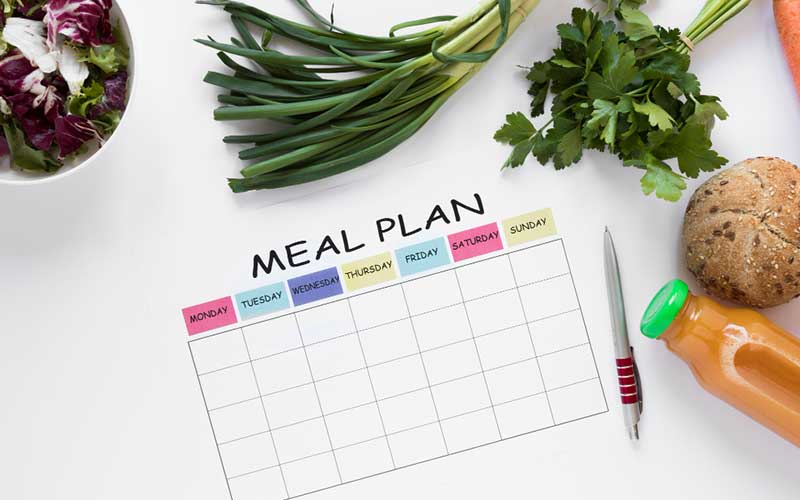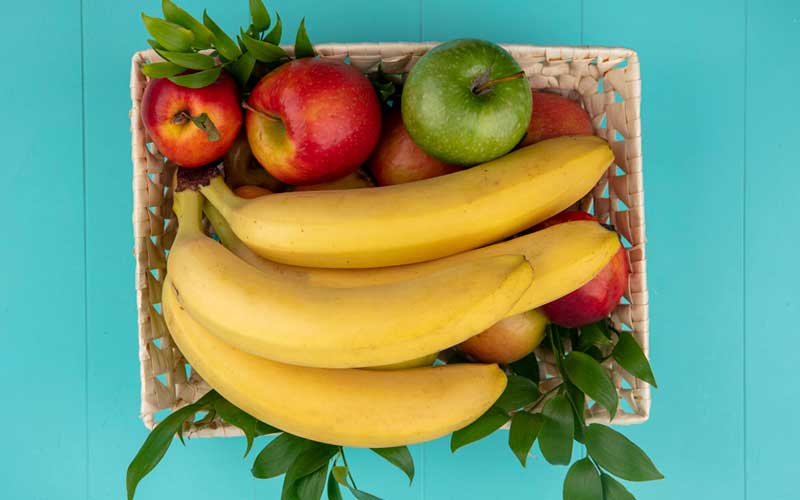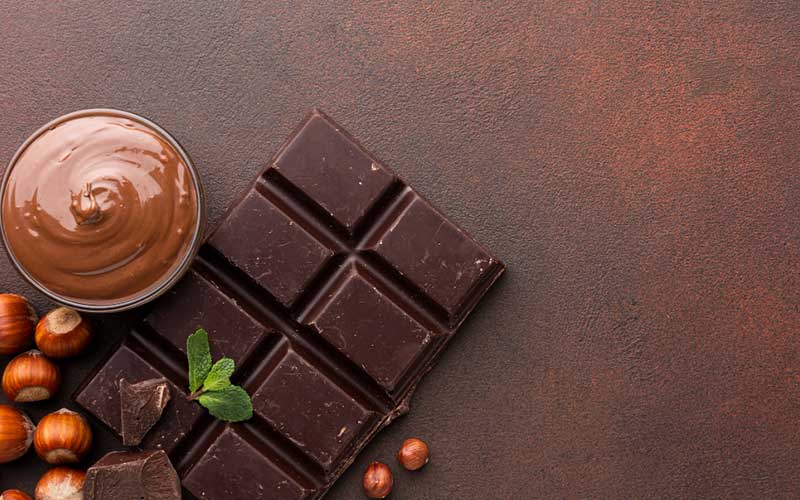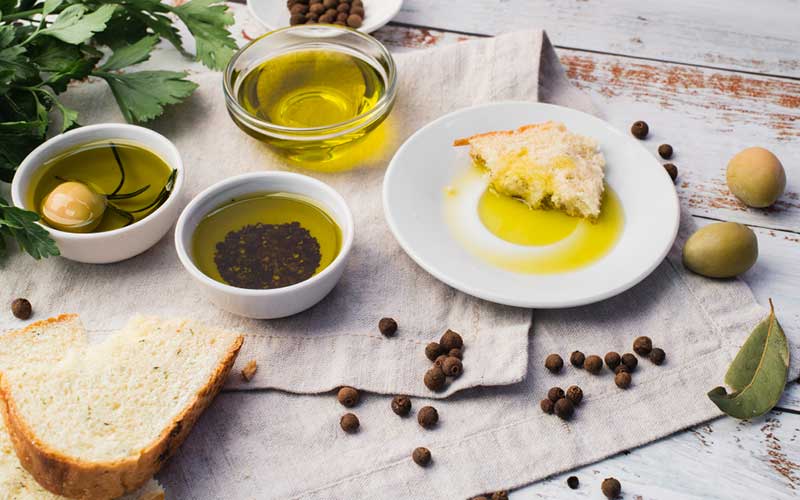Welcome to college life, where instant noodles become a food group, and the microwave is your best friend.
Whether you're living in a dorm room or your first off-campus apartment, grocery shopping as a college student can feel like navigating a corn maze blindfolded. This is why today we have put together a college student grocery list that includes everything, from produce to fresh fruit, we covered all those bases and some more!
Even on a student budget, you can still make this work!
Have no fear, future scholars of ramen, for we have crafted the ultimate guide to grocery shopping that will save you money, time, and maybe even a headache or two.
Let's get ready to transform your pantry into a mini supermarket and your kitchen into a five-star (or at least one-star) dining experience.
The Basics: Understanding Your Needs
Before diving into the world of grocery aisles and shopping carts, let's take a moment to understand what you really need. Spoiler alert: it's more than just a 24-pack of soda and a family-sized bag of chips.
Know Your Budget

First things first, let’s talk money. You might not have a millionaire’s budget and simply be a student on a budget, but that doesn't mean you have to eat like you're on a survival show, because you can still get a healthy grocery list out of this.
Here's how to budget like a boss:
- Set a Weekly Budget: Start with a budget of $50-$75 per week. This might vary based on your location, dietary needs, and appetite.
- Stick to It: Write it down or use an app to track your expenses. Remember, staying within budget means more money for those Friday night outings!
Plan Your Meals

Meal planning is your secret weapon against impulse buying and wasting food.
- Weekly Planning: Spend 15 minutes on Sundays planning your meals. It’s like playing Tetris, but with meals instead of blocks.
- Mix and Match: Create meals with overlapping ingredients to save money and prevent food waste.
Consider Your Lifestyle

Do you have time to cook every day, or do you need grab-and-go options? Consider:
- Cooking Skills: Mastering a few basic recipes can make a huge difference. If you can boil water and wield a spatula, you’re on your way.
- Schedule: Are you running between classes or studying late at night? Choose foods that fit your schedule.
Good Grocery Lists for College Students
Here's the moment you've been waiting for: a comprehensive grocery list designed specifically for college students. We've divided it into categories for easy navigation.
Fresh Produce

Fruits and vegetables are the unsung heroes of the grocery list. They add flavor, color, and nutrition without breaking the bank.
- Fruits:
- Bananas: Great for snacking and smoothies. Plus, they double as makeshift telephones.
- Apples: Crunchy, satisfying, and ideal for late-night study snacks.
- Berries: Blueberries or strawberries are perfect for adding to cereal or yogurt.
- Avocado: Because every college student deserves a little luxury, even if it’s spread on toast.
- Vegetables:
- Spinach: Versatile and packed with nutrients. Toss it into salads, pasta, or smoothies.
- Carrots: Perfect for snacking or adding crunch to meals.
- Bell Peppers: Great for stir-fries, salads, and stress-relieving chopping sessions.
- Broccoli: Your mother was right; it’s good for you. Steam it, roast it, or hide it in casseroles.
Proteins

Protein is essential for keeping you full and focused. No protein, no problem-solving!
- Eggs: The Swiss Army knife of the kitchen. Scramble them, boil them, or make an omelet. They’re cheap and full of protein.
- Chicken Breast: A lean meat that can be cooked in countless ways. Grill, bake, or stir-fry with your favorite veggies.
- Tofu: For vegetarians or those looking to mix it up. Marinate and cook it to absorb flavors beautifully.
- Peanut Butter: Delicious and versatile. Slather it on bread or add it to smoothies for a protein boost.
- Canned Tuna: An affordable, protein-packed option for sandwiches and salads.
Dairy and Alternatives

Keep your bones strong and your cereal soggy with these dairy options:
- Milk or Plant-Based Alternatives: Whether you're into cow's milk or almond milk, there’s a carton out there with your name on it.
- Yogurt: Perfect for breakfast or as a snack. Choose plain yogurt and add your own toppings to avoid added sugars.
- Cheese: From grilled cheese sandwiches to toppings for pasta, cheese is a culinary MVP.
Grains and Carbs

Ah, carbs. They’re the backbone of every satisfying meal and the reason why food comas exist.
- Rice: A cheap staple that’s easy to cook and pairs well with almost anything.
- Pasta: The ultimate comfort food. Keep a variety of shapes and sizes for endless pasta-bilities.
- Bread: For sandwiches, toast, or feeding ducks (not recommended as a main dish).
- Oatmeal: A healthy breakfast option that’s easy to customize with toppings.
- Tortillas: Perfect for wraps, quesadillas, or pretending you're a chef with flair.
Snacks and Extras

Because let’s be honest, you’ll need something to munch on during those Netflix marathons or late-night study sessions.
- Popcorn: A whole grain snack that’s perfect for movie nights.
- Granola Bars: A portable snack for when you’re running late to class.
- Hummus: Pair it with veggies or pita bread for a healthy, satisfying snack.
- Dark Chocolate: For those moments when only chocolate will do.
- Trail Mix: A great energy boost during study sessions.
Condiments and Pantry Staples

No kitchen is complete without a selection of condiments and staples to add flavor to your dishes.
- Olive Oil: A kitchen essential for cooking and dressing salads.
- Salt and Pepper: Because bland food is a crime.
- Spices: Start with basics like garlic powder, paprika, and Italian seasoning.
- Soy Sauce: Perfect for stir-fries and adding umami flavor.
- Pasta Sauce: Keep a jar on hand for quick and easy pasta dinners.
- Vinegar: Ideal for salads and marinating.
Beverages

Stay hydrated and caffeinated, because you can’t survive on coffee alone (although you might try).
- Coffee or Tea: Essential for waking up and keeping up.
- Juice: A splash of vitamin C in the morning never hurt anyone.
- Water Bottles: Reusable ones are eco-friendly and cost-effective.
Tips for Smart Shopping
Shop Sales and Use Coupons
Keep an eye on weekly sales and use coupons to maximize savings. Apps like Flipp and RetailMeNot can help you find the best deals.
Buy in Bulk (When It Makes Sense)
Certain items like rice, pasta, and toilet paper are worth buying in bulk. Just make sure you have the storage space—no one wants to trip over a 10-pound bag of rice.
Don’t Shop Hungry
The golden rule of grocery shopping: never shop on an empty stomach. Everything looks delicious when you’re hungry, including those overpriced organic cheese puffs.
Use a Shopping List
Write it down or use a note-taking app to create your list. It keeps you focused and prevents impulse buys. Plus, there’s a certain satisfaction in crossing items off your list.
Stick to Store Brands
Store brands often offer quality comparable to name brands at a fraction of the cost. Your wallet will thank you, even if your taste buds never notice the difference.
Embrace Leftovers
Cook once, eat twice (or thrice). Make big batches and save leftovers for easy meals throughout the week. Your future self will appreciate it, especially on those busy days.
Buy Frozen Fruits and Vegetables
Frozen fruits and vegetables are a great alternative to fresh produce, as they are often cheaper and last longer. Use them in smoothies, soups, or stir-fries.
Shop Seasonally
Fruits and vegetables that are in season tend to be cheaper and more flavorful. Visit your local farmers' market or look for seasonal produce at the grocery store.
Meal Ideas for College Students
Here are a few simple and budget-friendly meal ideas to get you started:
Breakfast
- Overnight Oats: Mix oats with milk or yogurt, add your favorite fruits and nuts, and refrigerate overnight. A quick and healthy breakfast!
- Avocado Toast: Top whole-grain toast with avocado slices and a sprinkle of salt and pepper. Add an egg for extra protein.
- Smoothie: Blend a banana, a handful of spinach, a scoop of yogurt, and a splash of milk for a nutritious drink.
Lunch
- Chicken Wrap: Fill a tortilla with grilled chicken, lettuce, tomatoes, and a drizzle of dressing. Roll it up and enjoy.
- Vegetable Stir-Fry: Sauté your favorite vegetables with soy sauce and serve over rice or noodles.
- Quinoa Salad: Mix cooked quinoa with chopped veggies, feta cheese, and a splash of lemon juice.
Dinner
- Pasta Primavera: Cook pasta and toss it with sautéed vegetables and a sprinkle of parmesan cheese.
- Chili: Make a big batch using beans, tomatoes, and ground meat or tofu. Enjoy with rice or cornbread.
- Baked Potatoes: Top baked potatoes with cheese, broccoli, and sour cream for a comforting meal.
Snacks
- Yogurt Parfait: Layer yogurt with granola and berries for a tasty treat.
- Veggies and Hummus: Cut up carrots, cucumbers, and bell peppers to dip in hummus.
- Peanut Butter Banana Sandwich: Spread peanut butter on bread and add banana slices for a satisfying snack.
Conclusion
Grocery shopping as a college student doesn’t have to be daunting. With a bit of planning, budgeting, and creativity, you can fill your fridge with delicious and nutritious foods that won’t break the bank.
Keep in mind that the key is to find a balance between healthy choices and indulgent treats.
After all, college is about learning to take care of yourself and enjoying the journey.
Grab your shopping list, hit the aisles, and transform your culinary dreams into reality. Happy shopping, and may your dorm room always smell of freshly baked cookies and success!


